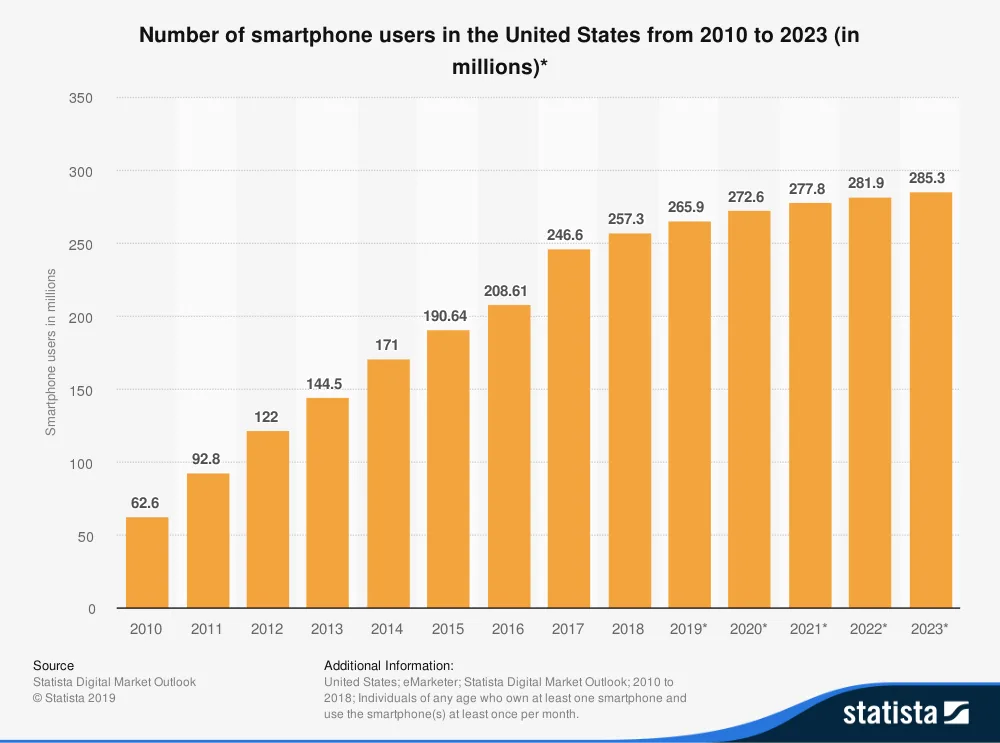Driving Traffic to Your Online Store

I hate to be the one to break it to you, but driving traffic to your online store is not as easy as you may think.
In order to set your online business up for success, you’ll need to roll out an organized, detailed marketing strategy to drive shoppers to your store.
For some data-driven perspective, 33% of clicks from organic search results go to the very first listing on Google — and the highest spenders are more likely to turn to organic search for information.
Worried about a budget? While spending a lot of money on Facebook or Google ads can bring you new leads, in this chapter, we’re diving into how you can realistically grow high organic traffic to your store without spending your budget dollars.
With the perfect mix of SEO and social media tactics, you can watch the number of new visitors to your store skyrocket when you launch. These strategies will continue to drive more traffic as your business grows.
How To Drive Online Traffic To Your Small Business
When you visit Pinterest and search for ‘apple pie recipe’, you’re bound to find hundreds of recipes, each unique in ingredients and baking time, all yielding the same result: a delicious apple pie.
Think of driving online traffic in the same light. While many brands drive hundreds of thousands of visitors to their website and social media platforms, they all have their own strategy.
You may have common ingredients, like SEO and social media, but no content marketing strategy is equal. Some brands may rely heavier on video whereas others have an award-winning blog. When crafting your marketing strategy to drive online traffic to your small business website, think about your brand and what makes it unique.
Ask yourself:
What type of content resonates with my target audience?
On what social media platforms are my target consumers most active?
What keywords are most relevant to my business and potential customers?
Here are several ways to grow your website traffic — all of which require little to no money at all.
1. Set up an online presence with social media.
Imagine — you finally launch your online store and the only person who visits is your mom. Worst nightmare, right?
In order to make sure you have traffic from the very start of your business, you’ll need to build brand awareness and excitement for your product.In today’s society, thanks to the increased use of mobile devices and smartphones, the fastest way to get the word out is via social media. It’s also a cost-effective option as it’s free to use!

Popular social media platforms include:
Instagram,
LinkedIn,
Facebook,
Pinterest,
and Twitter – just to name a few.
Focus your marketing efforts on the platform where your target audience is most active. Instagram is a popular choice for brands targeting the Gen Z and millennial population.
Before you get too excited about opening a social media account, you’ll need high-quality content. Without it, you won’t be able to take your online traffic to the next level.
For inspiration, look to competing brands or bloggers and influencers posting about products in your niche. By taking a look at high performing content, you’ll get an idea of how to position your brand and your products in the social space.
Social media marketing is a powerful component to driving online traffic because it allows you to directly engage with your customers. So while you drive traffic to your website (e.g. homepage, a specific landing page, or other web pages), you simultaneously build a community for your customers.
Over time, your social media built community will grow and be a home for customers to ask questions, discover new products, learn your brand messaging, and so much more.
If you know how to engage with you audience well, you’ll see a healthy trend of growth.
2. Take a new approach to email marketing.
Another way to drive traffic to your store is by building your email newsletter list and leveraging email marketing to communicate to your customers.
On your website’s homepage, you’ll want to make sure customers have an option to enter their contact information to subscribe to your e-newsletter.
Collecting an email list is one task — the next is creating an eye-catching, value-adding newsletter. You can choose at what cadence you send emails, but we recommend scaling your cadence over time, ultimately aiming for a goal of at least one email newsletter per week.
Here are some ideas of content to include in your email marketing and e-newsletters:
If you have a local business, be sure to use your newsletter to spread the news about in-person events.
If you’re big on blogging, include 1-3 of your most recent posts.
Announce upcoming promotions (with a specific campaign link or promotional code, so you know customers came from your email newsletter).
Educate new customers on your loyalty program or offer newbie incentives.
Share high-performing content from your social networks.
Automate abandoned cart notifications.
Don’t underestimate the power of email marketing as it can have a seriously positive effect on your ecommerce conversion rates and, ultimately, help you grow your business.
Here are a few inspiring examples of successful email marketing.
Pink Lily Boutique.
With a direct call-to-actions and a promotional call-out, Pink Lily immediately catches the eyes of their customers.

Bliss.
Helping their customers brave the chillier season, Bliss pushes promotional offers for their seasonally fitting products.

3. Utilize SEO resources.
Search engine rankings are a big deal for small businesses trying to build online traffic.
The average person completes a Google search 3-4 times per day.
While other search engines – like Bing – are still important to your SEO strategy, Google owns more than 95% of the search engine market share – making it a top search engine optimization priority for many small business owners.
In order to make sure you rank for key terms in your niche, you’ll want to focus on:
Your domain name,
Using a keyword tool, like Clearscope, when creating content,
Analyzing SEO performance on Google Analytics,
And, if you want to put budget toward it, studying your pay-per-click (PPC) and campaign performance in Google Adwords.
By monitoring your SEO performance, you can get a full view of where you need to optimize your site. If you are custom designing your website, work with a web designer to see where and how you can optimize components of your website for SEO.
4. Leverage your promotional strategy.
Everyone loves a great sale.
Seriously – for millennials and Gen Z, the #1 incentive to purchase is a sale or promotion.
So, how exactly do you integrate promotions into your online marketing strategy? What’s the right balance?
Instead of thinking about sales as a promotional strategy, start thinking of it as a value strategy. In 2020, consumers want to know they are getting more value for their spend. There are a few ways in which you can do this:
Go the traditional route and offer discounts and coupons, optimizing on major retail holidays like Black Friday and Cyber Monday,
Launch a tiered loyalty program where customers gain access to exclusive content, sales, or freebie products the more they purchase, or
Create bundles and kits – where customers save money by purchasing select products together.
For small business marketing, it’s important to evaluate each of these options and determine if they are truly viable for your business. At the end of the day, you are aiming to create a profitable business, so be wary of offering too many promotions.
5. Local marketing.
Did you know that, on average, brands see a 45% increase in online traffic after launching a brick-and-mortar store?
With that said, it’s no surprise that more brands are taking their experiences offline – whether it be opening a permanent retail location or hosting ‘pop-ups’ or offline events.
Local marketing has continued to evolve as society has shifted to an experience-driven world.
For example, Burrow, a direct-to-consumer furniture brand, has two partner showrooms where customers can experience their products in real life. Plus, they use their retail locations to host in-person events, cultivating the customer community they’ve worked hard to build via their digital marketing strategies.

Image Source: Burrow
Maybe you don’t have the resources to launch a brick-and-mortar store or a pop-up spot. There are so many other ways to leverage local marketing.
The easiest? Use social media! This free to use tool can work wonders. It’s quite simple – when you post content, tag a location. This way, the algorithm will include your posts to those who are in that area. This exposes you to a whole new group of potential customers.
To add another layer, if you’re interested in working with influencers, hosting an influencer trip can also be a great way to leverage local marketing. Think about what market or city you’d like to tap into – and plan a trip there! Not only will you gain traffic from working with influencers, but you’ll expose your small business to potential customers in the city you chose to go to. However, keep in mind that this option can be fairly expensive.
Third, pay attention to local SEO opportunities. Depending on your business, this can vary. If you have a brick-and-mortar location, make sure you appear in Google Maps. If you don’t have an offline presence, create a location for your business! Capitalizing on where your business is from can add a personal touch and result in local pride for your brand.
The narrative for local marketing is shifting to a world where experiences are given the most priority. Capitalize on how you can bring a special experience to your customers – and where you’d like to see your business go.
6. Tap into your connections.
This might seem like a simple step, but tapping into your network can create a ripple effect, expanding your brand awareness to new horizons.
When you’re preparing to launch your online business, spread the news with your connections! This could be sharing by word-of-mouth, on social media (like LinkedIn), or sending an email to your family and friends.
Be sure to provide your connections with information about your small business that can generate some online traffic. This could be providing them with:
Your website’s domain name,
Your social media accounts,
A hashtag to share on social media,
A catalog highlighting your products,
Or even a media kit – highlighting your company’s mission and vision.
In addition, attend local networking events in the niche that your company resides. Bring a business card with your name, website domain name, and contact information to hand out to potential customers or partners.
You can find local networking events on:
Facebook groups,
And more.
Spreading the word directly to your connections adds an element of personalization and gives you the opportunity to speak to your brand.
Best part? Speaking to your connections won’t cost you a penny.
7. Create a buzz.
Your social media presence, email list, and website traffic are all on the rise. Now is the perfect time to create more buzz around your brand.
Yes – it’s time to tap into the world of public relations.
You have a crafted story to tell, but how do you get it out there?
Write a press release or blog post that you can pitch to local newspapers and magazines – or even create pitches to be featured on your local news or radio station.
When creating these pieces of content to share, be sure to include:
Your brand name,
Vision, mission and purpose,
Product assortment,
Statistics, and
Where customers can find your store (e.g. offline location, upcoming event, website).
As mentioned earlier in this chapter, leveraging influencers is another great way to create buzz around your products.
In the next chapter, we’ll explore how to measure your success and what key performance indicators (KPIs) are essential to your business.
